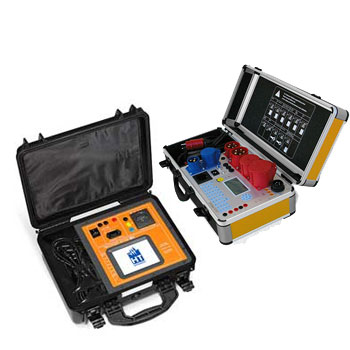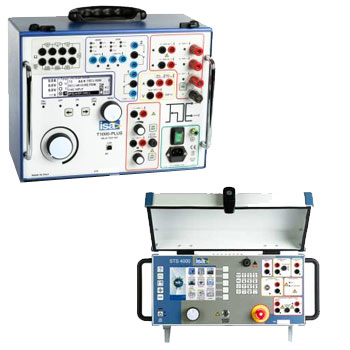
Pressure Calibration Technology – precise generation, measurement & documentation from vacuum to ultra-high pressure
Pressure calibration technology covers pressure sources (hand/lab pumps, volume controllers, automatic controllers), reference gauges/transducers, deadweight testers, leak-test/verification rigs, hoses/adapters and calibration software for traceable tests from vacuum up into the four-digit bar range.
With systems from ICS Schneider Messtechnik you can calibrate gauges, pressure switches, process transmitters, data loggers and digital calibrators efficiently—in the lab or on-site—with full as-found/as-left records and ISO/IEC 17025-traceable certificates.
Key capabilities (model-dependent): mbar-level fine control, automated up/down sequences, stability/leak-rate measurement, gas/oil/water media switching, communication interfaces (HART/Modbus/Profibus), and CMMS/CAQ integration.
FAQ on Pressure Calibration Technology
Answers on generation, references, procedures, media, uncertainty, safety, documentation and best practices.
Which pressure sources exist and what are they best for?
| Source | Typical range | Advantages | Use case |
|---|---|---|---|
| Hand pump (gas) | Vacuum…+25 bar | Mobile, quick | Field calibration, service |
| Hydraulic hand pump | 0…700/1,000 bar | High pressure, robust | Workshop/lab, high pressure |
| Volume controller/fine adjuster | mbar…hundreds of bar | Very fine control | Fine setting, leak tests |
| Pressure controller | Vacuum…210/400 bar (model-dep.) | Automation, stability, sequences | Lab/production, series tests |
| Deadweight tester | mbar…2,000+ bar | Primary standard, highest accuracy | Reference labs, plant standards |
Which references suit which accuracy?
Digital reference gauges/transducers for general work (e.g., 0.02…0.1 % FS). For ultimate accuracy use a deadweight tester (requires density/gravity/temperature corrections) with uncertainties in the 10⁻⁴ range.
How does a typical pressure calibration run?
- Connect DUT and reference, select medium, remove air/vent.
- Drive points per plan (e.g., 0–25–50–75–100 % and back).
- Wait for stability, record values (as-found), adjust if needed, record as-left.
- Issue report/certificate with MU, environmental data and traceability.
Gas or liquid—what medium should I use?
Gas (air/N₂) for low pressures/sensitivity and when contamination must be avoided. Hydraulic oil/water for high pressures. Ensure media cleanliness, compatibility and proper venting.
How is measurement uncertainty determined and reduced?
- Combine contributions from reference, resolution, hysteresis, stability and environment (per GUM).
- Choose points near the operating range, allow stabilization time, control temperature.
- Ensure tightness (leak checks, proper sealing concepts).
How do I perform leak tests correctly?
Pressurize to test level, define a hold time, document drift rate (e.g., mbar/min). For gas, optionally use bubble/sniffer tests (e.g., helium). Compensate for temperature drift.
Which units and reference types must I distinguish?
Absolute (abs), gauge (g) and differential (Δp); units such as Pa/kPa/MPa, mbar/bar, psi. For absolute pressure include the barometric pressure.
What fittings/adapters are common?
G 1/4 (BSPP), G 1/2, NPT, M20×1.5, 7/16″-20 UNF for microbore lines; matching quick couplers, cone/face-seal adapters, T-pieces and isolation valves.
How do I handle very low pressures?
Minimize volume changes (short lines, small cavities), use a fine volume adjuster, avoid temperature gradients, consider differential setups with zeroing.
How to calibrate differential pressure transmitters?
Plumb both sides via manifolds with an equalize function, set zero, apply positive/negative Δp sequentially, ensure both paths are leak-tight.
What safety rules apply for high pressure?
- Wear face shield/goggles and gloves; use guards/enclosures if needed.
- Provide strain relief, whip checks; tighten fittings to the specified torque.
- Use only approved p/T and media; depressurize before loosening.
What are typical sources of error?
- Leakage → clean sealing faces, check O-ring/packing, verify torque.
- Unstable pressure → use a volume controller, equalize temperature, remove gas bubbles from hydraulic systems.
- Unit/reference mistakes → set abs/g/Δp correctly, capture barometer.
What documentation is produced?
A calibration certificate with as-found/as-left, test points, errors, expanded uncertainty (k=2), methods/standards, environmental data and the traceability chain; DAkkS-conform on request.
Do you support selection, integration & training?
Yes—we size sources/references, configure adapter/hose kits, integrate software/CMMS, create procedures and train your team in uncertainty, leak testing and audit readiness.



















































































































































































